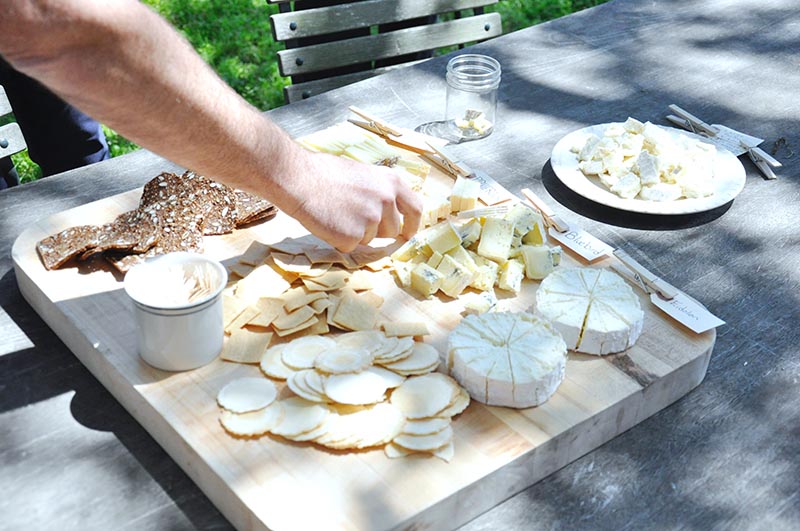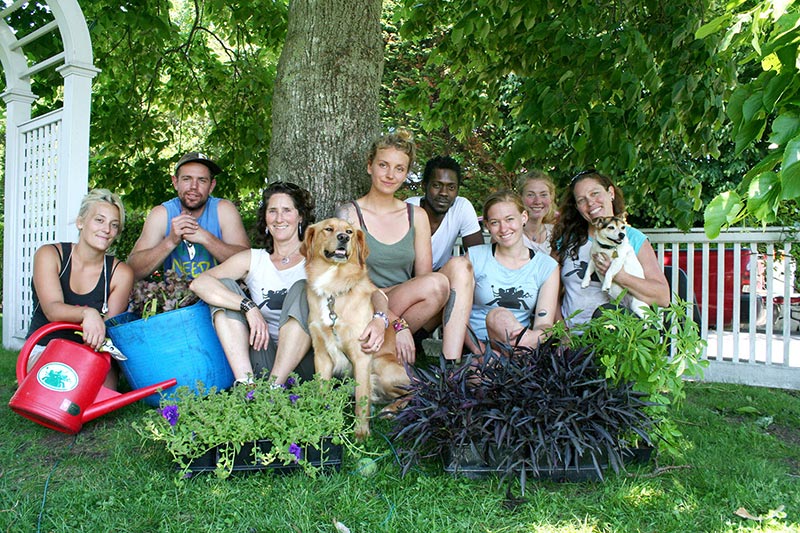There is nothing quite like the excitement of discovering a new favorite flavor. This is especially true with cheeses, as I learned at the Grey Barn, off South Road in Chilmark. This 100-acre dairy farm, owned by Eric and Molly Glasgow, has been in business for eight years, and they’ve got cheesemaking down to a creative science. With 31 dairy cows and one bull, the farm makes more than enough cheese to supply ample Vineyard demand, and sells about 80 percent of its products to off-Island distributors.
With a view of Belted Galloway cows grazing contentedly in their sunbathed pastures, I joined about 10 other curious cheese lovers on an hourlong cheesemaking tour. As I learned, the process of making cheese is entirely unique to the type of cheese you are working to produce, and the result can vary, largely based on the milk and the conditions of the caves in which the cheeses are left to age. For this reason, cheesemaker Joe Alstat’s apparent patience, creativity, and appreciation for repetition make him ideal for the job. He explained his work as part science and part janitorial, as an immense amount of cleanup is required to keep the facilities in near-sparkling condition.
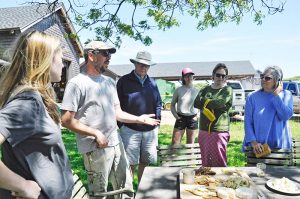
The tour begins with a look into the milking room. Eric explains that the cows are milked twice a day and set to pasture on a new section of grass after each milking, which requires quick feet for those tasked with moving the temporary electric fences. The milk is then piped about 30 feet into a 1,000-liter chilled holding tank in the cheese room. While a bit of milk is bottled and sold as raw milk, the vast majority of the milk is destined to become cheese.
The dairy produces three types of certified organic cheese at present: the awardwinning Prufrock, bloomy Eidolon, and briny, melt-in-your mouth Bluebird, all named in poetic reference. Prufrock, for instance, is made with fresh, raw milk every Monday, Wednesday, and Friday morning. The milk is warmed and cultured, and the coagulating agent rennet is added so that curds form. The process gains intensity after these curds are adequately developed, as they must be delicately ladled into the cheese molds and flipped multiple times throughout the next 24 hours. The following morning, the newly formed cheeses are salted in a brine bath before being transferred to the cheese caves, which are located in the basement portion of a building that many Islanders may remember as Campbell and Douglass Harness and Feed. The Prufrock is a washed-rind cheese, which means that every day during its six-week stay in the cheese cave, it undergoes an individual bathing to produce the unique, yellow-orange rind that the Prufrock is known for. On the inside, the cheese develops into a firm yet supple, textured, slightly pungent cheese that is hard to properly describe and too easy to indulge in.
Eidolon does not have a washed rind, and instead develops a thick, creamy bloom on the interior of the rind during its four-week aging. As we learned during the tour, the length of aging and the shape and size of the cheese directly inform the ratio of bloom to the harder interior of the cheese. Our tour had the pleasure of tasting a traditional Eidolon and one that had about twice the amount of creamy coating on the inside of the rind, due to the use of a smaller cheese mold. This is simply a matter of preference, and being somewhat new to the fantastic world of cheese, I simply loved both versions and, like everyone else on the tour, indulged in both multiple times.
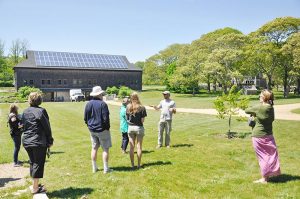
The Bluebird is described as a dolce. The farm describes it as “pleasantly salty with something lurking below.” Indeed, the understated yet aromatic flavor of this cheese is exceptional.
When I asked Alstat about his favorite cheese to make, he replied, “I really like making Prufrock, and I won an award for it last year. We won an award for farmstead cheese aged under 60 days from the American Cheese Society.” It’s a huge testament to the delectability of these carefully crafted treats.
One of the special features of this farm is the system in which the products are sold. The farmstand is fully stocked with cheese, meat, and select veggies from the farm garden, and customers serve themselves and leave the appropriate amount of cash in the honesty box. If you have a question regarding any of the products, you can seek out any employee, and they’ll be more than happy to describe their products; however, the majority of shoppers come and go quietly, enjoying the serenity of this up-Island gem. You have only to venture past the “Entering Chilmark” sign on South Road toward Aquinnah to experience the Grey Barn for yourself, although bringing home a few goodies to share with others is never a bad idea.
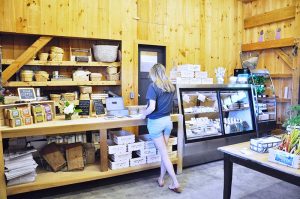
Weekly tours from now until Columbus Day include the Cheese Tasting and Experience tour (Fridays at 1:30 pm, $20 per person) a Farming Tour (Mondays and Thursdays at 10 am, $10), and a Cheese Tasting and Milking Tour (Saturdays at 4:30 pm, $20 per person). If you do attend a cheese tasting, be sure to go a little hungry, as you’ll certainly want to try each cheese more than once. I hate to pick favorites, but I will say that the Prufrock will be my summer go-to. If you have any affinity for cheese, you really cannot go wrong with the selection at the Grey Barn.

